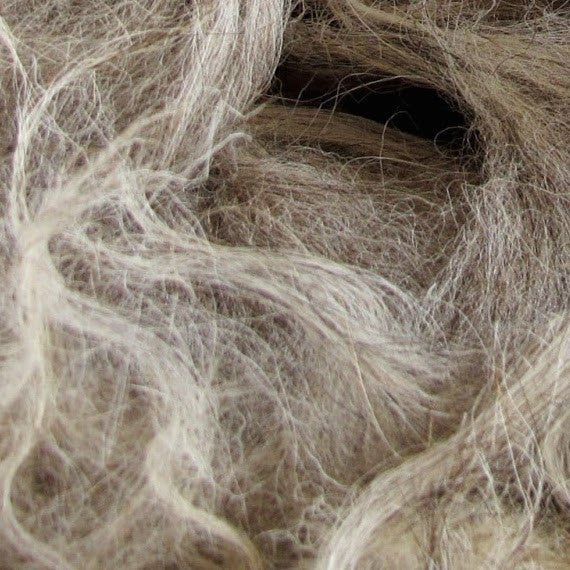Wool 101 - the quickest guide to understanding wool
Posted by MAJALIWA BASS

WHAT ARE WOOL SOAKERS?
Wool soakers (also called longies, woolies, shorties and soakers) are diaper covers made from 100% wool designed to be worn over Flat, Fitted, Prefold and Contour cloth diapers. Wool soakers are typically made from Angora or Merino wool and are extremely soft, breathable, and naturally antibacterial. The beauty of wool soakers is that they can absorb up to one-third of their own weight in water, they're naturally antibacterial and they breathe extremely well so they can be worn in both warm and cold months. For this reason they are great for use during both day and night.
HOW DO WOOL SOAKERS WORK?
When the diaper becomes wet, the wool soaker wicks the moisture away from the diaper by absorbing it. Lanolin, a natural oil that comes from sheep, keeps the urine from leaking back out of the wool quickly. Over time, the lanolin needs to be replaced (roughly every 2 to 3 weeks) to help the wool soaker maintain its super absorbent abilities. This is done through a process called lanolizing. Lanolizing cleans the wool and restores the lanolin to the cover.
In between use, air out your wool soaker by laying it flat. This will allow the cover to dry and will eliminate any odors that may be in the wool cover. If poop gets on the diaper cover, you will need to clean and lanolize immediately.
Click here to watch a short step-by-step video on how to wash and lanolize your wool >>
ALTERNATIVES
A cheaper option to wool soakers are fleece covers. Like wool soakers, fleece covers are meant to be worn over Flat, Fitted, Prefold and Contour diapers. Unlike wool however, fleece covers don’t breathe as well making them great for colder months, but aren't recommended for use during warmer months as they would make baby hot. The upsides to fleece covers however are that they are not as expensive as wool soakers and they don't require a special cleaning process (i.e. they can be thrown in the wash with your other diapers).
For more info on Fleece covers, see Caring for Fleece.
RECOMMENDED BRANDS
There are a ton of wool cover brands out there. Listed below are the most commonly purchased wool brands. If you're the DIY (do-it-yourself) type, you can also try your hand at either knitting your own wool or sewing your own wool covers from upcycled wool sweaters. Below are a few DIY resources too.
Popular Wool Brands
- Aristocrats
- Disana
- Ecoposh
- Engel
- Imagine
- LanaCare
- Sustainablebabyish by Sloomb (also called Sbish)
- Tiny Tush
DIY wool soaker tutorials
- Sprightly Soaker Pattern by Little Comet Tails
- Katrina's Sew Quick Soaker Patterns
- Sweet Baby Soakers and Skirties
WHAT TO BUY
- Wool Covers - if you plan on using wool full-time, you'll need 4 to 6 wool longies for colder months and another 4 to 6 wool shorties for warmer months. If you only plan on only using wool for nighttime use, you'll only need 2 to 3 covers.
- Lanolin
- Soap - either baby wash, wool wash, or castille soap
WASHING & LANOLIZING WOOL
If you've purchased a wool cover to use with your cloth diapers, then you'll need to lanolize it to make it "water proof". Below are simple instructions for lanolizing your wool.
Note: you will need to do this every 2 to 3 weeks, if your wool gets stinky, or when your wool starts to leak.
What You’ll Need:
- 1 Tbsp of Lanolin (we recommend Lansinoh Breast Cream)
- 3 drops of baby wash, wool wash or castille soap
- 1 cup of boiling hot water
- Towel
Instructions:
- Rinse wool cover under cool running water to remove urine and/or feces
- Boil 1 cup of water
- Add 1 tbsp of lanolin and stir well
- Add 3 drops of baby wash, wool wash or castille soap
- Stir well until completely blended
- Fill a sink or bowl with lukewarm water (enough to barely cover your wool)
- Add your lanolin mixture to the sink or bowl
- Add your wool item and let it soak for 30 minutes
- Remove your wool and gently squeeze it to remove excess water
- Lay flat on your towel
- Roll the towel up, gently squeezing it as you go
- Unroll the towel and lay your wool flat to dry (takes up to 48 hours)
Note: Never dry wool in the dryer and never use Woolite.
HOW TO STORE WOOL
When stored over a period of time, wool has a propensity to be eaten by a number of insects - mainly moths and carpet beetles. They're attracted to the protein in the wool fiber. To keep insects from eating your wool, follow these simple steps:
- clean your wool
- wrap it in newspaper (moths hate newspaper)
- place it in a cotton pillowcase (or other cotton bag)
- tie the end of the bag shut with twine
- place bag inside of another pillowcase with the tied ends on opposite sides
- keep away from direct sunlight, damp areas, hot attics or dusty garages
Do NOT store your wool in a cardboard box, plastic bag or plastic bin. This will cause mold and mildew damage. Also, keep away from direct sunlight, damp areas, hot attics.
HOW TO REPAIR WOOL IF IT SHRINKS
Washing wool in hot water or (in my case) if your wool got accidently tossed in the washing machine and then the dryer (ouch!) then your wool cover has shrunken and tighted quit a bit. Follow these steps to loosen up your wool so you can use it again.
- Fill your sink with lukewarm water
- Add 7 to 10 ounces of hair conditioner
- Add your wool and let it soak for about 20 minutes
- Then gently stretch it back to the right size/shape
- Mix 2 tablespoons of vinegar with 1 gallon of lukewarm water in a large bowl
- Add your wool to the vinegar solution and swish gently to remove the conditioner
- Hand wash and lanolize your wool using your usual wool wash routine
- Lay flat to dry




A Bee On
Kathy, we’ve also noticed this, especially with cotton clothes or bedding. Bottom line is baby needs to be changed more often or else use doublers or more absorbant diapers so the wool doesn’t take on as much moisture.
Anyway for the most part the wool covers work great as outer clothing in most weather and baby wears a t-shirt instead of a bodysuit.
If it’s wicking through right away your cover might need to be re-lanolized. Or you could try felting it up a bit to increase absorbancy.
Kristine On
Kathy-
What type of insert are you using? I use both a bamboo cotton and hemp insert and change frequently. The wool is not waterproof like PUL and so if the insert(s) is saturated it will leak. It is more water resistant and wicks the moisture back onto the insert.
Kathy On
When I’ve tried wool soakers I felt like my baby’s onesie was damp where it came into contact with the wool. Does anyone else have this issue? What am I doing wrong? I need to be able to use the wool soaker underneath clothing.